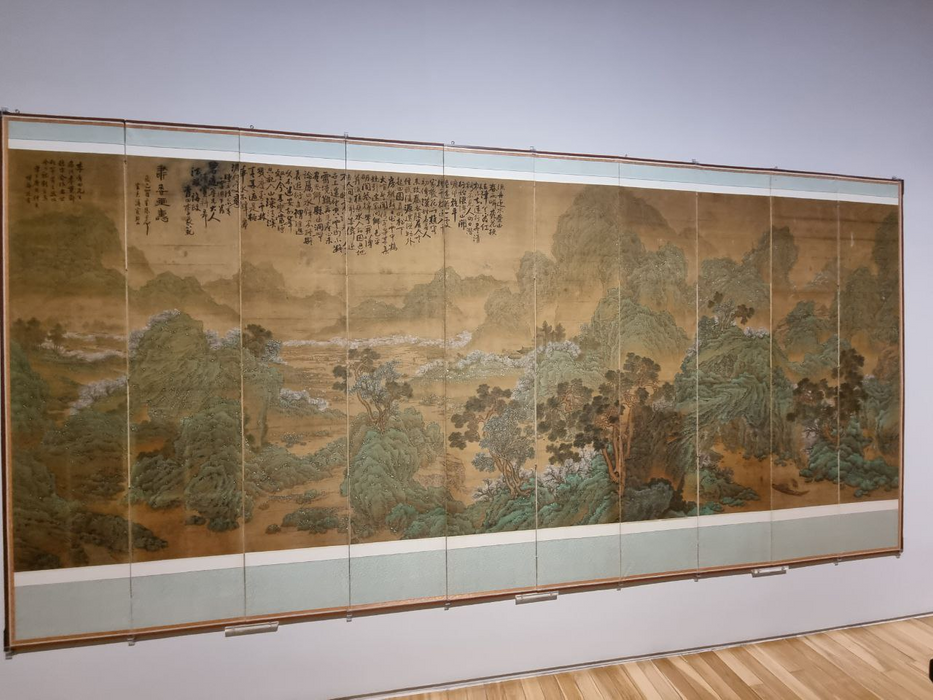I hope you like the art because today's post is dedicated to Korean art. Today I will show you an exceptional exhibition I really wanted to see. And I will tell you how much effort I put into visiting it!

Intro
I am sure you have heard about the Korean company Samsung. Probably, you have heard that the company's chairman passed away 2 years ago. After his death, a significant part of his art collection was donated to the Korean government. And now part of this collection is exhibited in the National Museum of Modern and Contemporary Art (MMCA) located in Seoul.

How to visit the exhibition
The entrance to the exhibition of the Lee Kun Hee collection is free of charge. However, there is another problem. A queue. People come to the museum before it opens and stand in line. The waiting queue for the ticket usually takes around 2 hours. And even when you get your tickets, it is not the right time to celebrate, because there is another 1-2-hours queue to enter the exhibition itself.

There was an online reservation before, but making that reservation was as easy as swimming through the Atlantic Ocean.
Lee Kun Hee Art Collection
MMCA since its establishment in 1969, has acquired artwork through purchases and donations as it works to contribute to defining Korean art history. The recent donation of the Lee Kun Hee Collection brings the scale of the museum's collection to over 10,000 works of art.
The donation of the Samsung chairman collection can be called a 'donation of the century'. The Lee Kun Hee collection comprises 1,369 Korean artworks and 119 overseas artworks. Be genre, it includes 412 paintings, 371 prints, 296 works of Hangukhwa (Korean traditional painting), 161 drawings, 136 craft pieces, and 104 sculptures. Over 320 of the works were produced before 1950s, while around 860, or 58%, as those born before 1930.
 Shaman, 1980 (Park Saeng Kwang)
Shaman, 1980 (Park Saeng Kwang)Exhibition of the Lee Kun Hee Art Collection
For the exhibition, just around 50 works were selected. Most of these works are representing the modern and contemporary eras from the early to the mid-20th century, which account for the main part of the Lee Kun Hee collection.
The exhibition hall was divided into 3 zones: Adoption and transformation, Shows of Individuality, and Setting Down roots and seeking new avenues.

Adoption and transformation
Under the Japanese occupation, Korea adopted new forms of culture, and this period also brought changes in art. New unfamiliar terms came into use, including 'still-life', 'figure painting', and 'landscape painting'. One of the representative works of this period is 'Paradise' by Baik Nam Soon, 1936.
 Paradise, 1936 (Baik Nam Soon)
Paradise, 1936 (Baik Nam Soon)Shows of Individuality
Even after Korea was liberated from Japanese rule, it was plunged into war. But, artists didn't give up on the future. Let me show you my favourite work.

Setting Down roots and seeking new avenues

Korean War didn't stop artists. They travelled overseas for their studies and explored new forms of art through tireless groups and individual efforts. One of the most popular works here is the oil painting 'White Ox' by Lee Jung Seob. The artist was one of those who made great contributions to the introduction of Western styles in Korea.


I have much more photos from of Lee Kun Hee collection on my phone. Nope, actually, I pictured each work. Maybe I will make a separate post just with artworks.
Hope you enjoyed that short digital tour of the exhibition!
Comments
Post a Comment